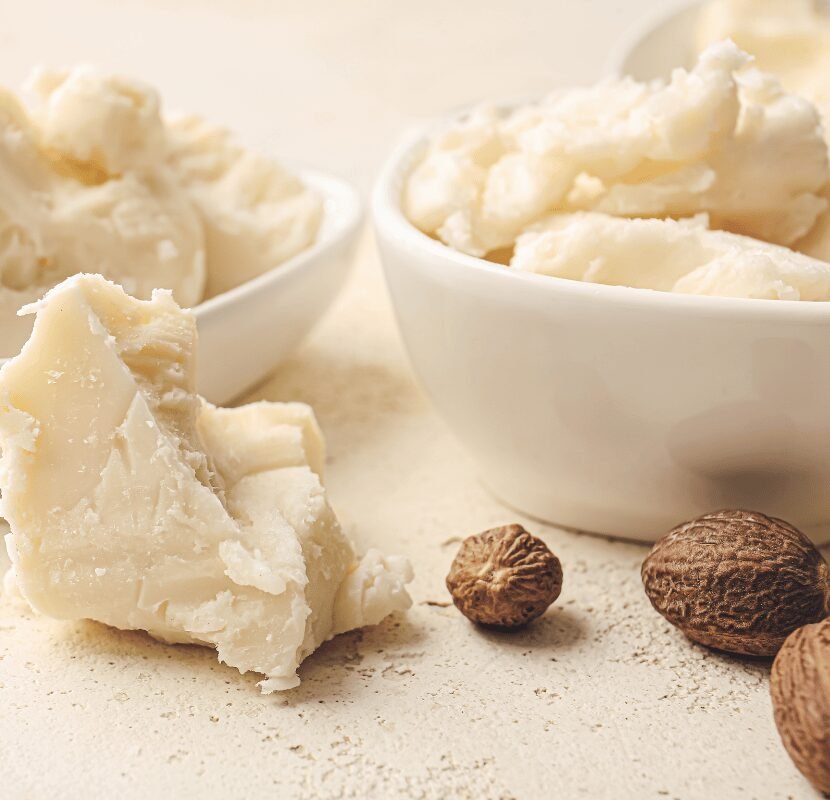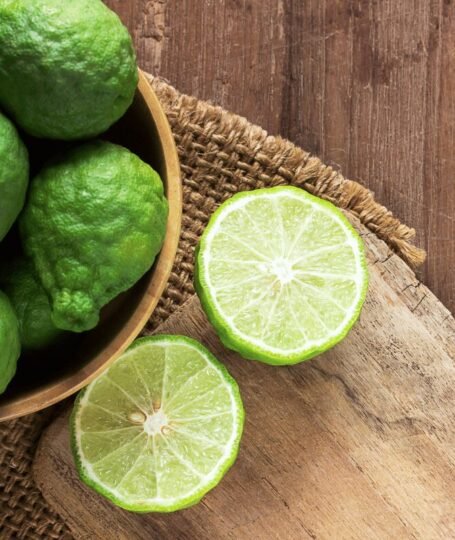No products in the cart.: £0.00
African Botanicals: Marvels of The Shea Nut

Introduction
Shea is a luxurious and versatile natural product, that has been cherished for centuries for its remarkable benefits. Extracted from the nuts of the shea (Karite) tree, which is native to the savannah regions of West Africa and the Nilotic regions of Eastern Africa, shea is renowned for its moisturizing, healing, and protective properties. This creamy substance has transcended its traditional uses, becoming a staple in beauty and skincare products worldwide.
The Origins of Shea Nut
The shea tree, scientifically named Vitellaria paradoxa, grows predominantly in Ghana, Nigeria, Mali, and Burkina Faso. Shea Nilotica in comparison, is derived from the nuts of the Vitellaria Nilotica tree, which thrives in the lush and fertile regions of East Africa, particularly Uganda and Sudan. These majestic trees can live for over 200 years and typically begin bearing fruit after 10 to 15 years. The shea fruit resembles a large plum, with a sweet, edible pulp surrounding a nut that contains the rich fatty shea butter.
The traditional process of extracting shea butter is labour-intensive and involves several steps. First, the nuts are harvested and left to dry in the sun. Once dried, they are cracked open to reveal the kernels inside, which are then roasted and ground into a paste. This paste is kneaded by hand in water to separate the fats, the heavy butter sinks to the bottom whilst the lighter oil floats to the top. Resulting in the luxuriously indulgent shea nut oil and the creamy, rich butter that is ready to be used in various applications.
Culture and Conservation
Significance of Shea In African Culture
Shea butter holds immense cultural significance in Eastern and Western Africa, where it is often referred to as “women’s gold.” Traditionally, women are the primary harvesters and processors of shea nuts, and the income generated from shea butter helps to support their families and communities. The production and trade of shea butter provide livelihoods for millions of women in rural communities.
In addition to its economic importance, shea butter is deeply rooted in African traditions and rituals. It is used in various ceremonies, such as births, weddings, and funerals, symbolizing prosperity, healing, and protection.
Preserving Traditional Knowledge
The shea tree thrives in the savannah regions of East and West Africa. The knowledge of cultivating and processing shea butter has been passed down through generations, preserving traditional practices and cultural heritage. By engaging in sustainable practices, communities have ensured the longevity of the shea tree, which in turn secures their livelihoods for the future.
Sustainable and Ethical Practices
The global demand for shea has led to increased awareness of the need for sustainable and ethical practices in its production. Many organisations and initiatives are working to ensure that the shea industry supports environmental conservation and fair trade.
Sustainable practices include the protection of shea trees, reducing deforestation, and promoting biodiversity. Ethical practices involve fair wages and working conditions for the women involved in the shea butter production process, as well as investing in community development projects.
Combating Climate Change
Shea trees play a significant role in combating climate change. They act as carbon sinks, absorbing carbon dioxide from the atmosphere and releasing oxygen. Moreover, the shea tree’s extensive root system helps prevent soil erosion and desertification, thus maintaining the ecological balance. By protecting and nurturing shea trees, communities contribute to environmental conservation and resilience against the adverse effects of climate change.
The Benefits of Shea in Health and Beauty
Moisturising and Nourishing
Shea nut oil and butter are both exceptional moisturisers, thanks to the high content of fatty acids and vitamins. Shea nut oil is rich in oleic, and linoleic acids, whilst shea butter (nilotica) also contains steric acid, lending it its solid form and aiding to lock in moisture and maintain the skin’s natural barrier. The vitamins A and E are present in shea nut fats including the oil, butter and nilotica providing essential nutrients that nourish the skin, promoting a healing, smooth texture and encouraging a radiant complexion.
In Skincare
Rich and moisturising, shea nut oil, shea butter and shea nilotica are versatile ingredients that can be added to many skincare products, including creams, lotions, balms, and lip treatments. Their ability to deeply moisturise and nourish the skin makes them ideal for tackling dryness, rough patches, and chapped lips. Shea nut oil can also be used as a natural remedy for stretch marks, helping to improve skin elasticity and reduce their appearance. Shea butter and shea nilotica are great for managing eczema and extremely dry skin conditions as they lock in hydration, soften handed skin and smooth away texture.
Healing and Anti-Inflammatory
One of the most remarkable properties of shea is its ability to heal and soothe the skin. It has been used for centuries to treat various skin conditions, such as eczema, psoriasis, and dermatitis. The anti-inflammatory compounds in shea oil help to reduce redness and swelling, providing relief to irritated skin. Additionally, its antimicrobial properties make it effective in preventing infections and promoting faster healing of wounds and cuts.
Shea’s Anti-Ageing and Protective Properties
Shea butter, shea oil and shea nilotica are all known for their potent anti-ageing benefits, as they all help to improve skin elasticity and reduce the appearance of wrinkles and fine lines. The presence of antioxidants, such as vitamins A and E, combats free radicals that cause premature ageing. Furthermore, shea fats are potent emollients forming a protective barrier on the skin, shielding it from environmental stressors such as harsh weather conditions and pollution.
Shea & Hair Care
Shea is not only beneficial for the skin but also works wonders for the hair helping to moisturise and condition dry, brittle hair, reducing breakage and split ends. The nourishing properties of shea oil and butter make them excellent treatments for dandruff and an itchy scalp. Regular use of shea nut oil and butter can leave the hair soft, shiny, and more manageable.
In Massage and Aromatherapy
Due to its soothing and healing properties, shea nut oil can be used in massage therapy and aromatherapy. When combined with essential oils, shea nut oil creates a luxurious massage balm that glides smoothly over the skin, providing relaxation and relief to sore muscles. Its ability to penetrate deeply into the skin makes it an excellent carrier for essential oils, enhancing their therapeutic effects.
How to Use Shea In Your Routine
Natural Shea Butter Soap
We use copious amounts of organic, unrefined shea butter in all our natural shea butter bars, harnessing their nourishing and creamy properties. Our cold process soap making means shea butter retains much of its nutrients which are usually lost through heat.
Beauty Oil
Our multipurpose Shea Magnifique makes skin and haircare super easy. Rich in oleic acid, with its medium absorption rate, great for itching and stretch marks on growing baby bumps. For hair care, it will be used as a hot oil treatment for dry itchy scalps and split ends.
Triple Shea Body Butter
Shea nilotica is used in our ultra moisturising, unscented Bare Butter. This ultra moisturising body butter is formulated using our triple shea formula that boats shea butter, shea nut oil and shea nilotica. Kind enough for the whole family, this nutrient-rich butter can be used from head to toe. With no harsh chemicals, petroleum derivatives or animal cruelty, Bare Butter can be used to condition all skin types including acne-prone and eczema types, moisturising, softening and smoothing the skin wherever applied.
Conclusion
The Shea nut tree truly is a marvel of nature, offering a multitude of benefits for the skin, hair, and overall well-being. Its rich history, cultural significance, and versatility make it a cherished and valuable product. As the world continues to embrace the natural and holistic approach to beauty and health, shea butter stands out as a timeless and essential ingredient. Whether used in skincare, haircare, or traditional rituals, shea butter remains a symbol of the beauty and resilience of the African people.



